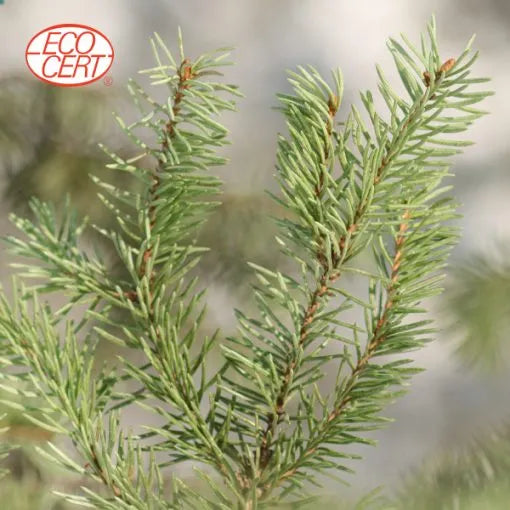


Functions of White Spruce – Organic
-
Skin system
-
Respiratory system
-
Osteoarticular system
-
100% organic
-
Circular economy
-
Directly from the producer in Quebec
-
Respect the Boreal Forest
-
100% Genuine
Origin
History
Learn more
Information
Recommendations
Storage
References
Official website
- Association forestière du sud du Québec
- Le guide sylvicole du Québec - Publications du Québec
- Ministère des richesses naturelles de l’Ontario
- National Library of Medicine, Schafer, D. and W. Schafer (1981). “Pharmacological studies with an ointment containing menthol, camphene and essential oils for broncholytical and secretolytical effects.” Arzneimittel-Forschung/Drug Research 31(1): 82-86.
- Ressources naturelles Canada
Books
- Baudoux Dominique. L’Aromathérapie, Se soigner par les huiles essentielles, Bruxelles, Éditions Amyris, Douce Alternative.
- Blondeau Sonia. Les molécules amusantes tome 1, Éditions Amyris, Bruxelles, 2022.
- Bosson Lydia. Hydrolathérapie, Guérir avec les eaux subtiles des plantes, Bruxelles, Éditions Amyris SPRL, 2015.
- Burton Laurence. Un goût de forêt, Identifier, récolter et régénérer les plantes du Québec, Montréal, Les Éditions de L'Homme, 2022.
- Catty Suzanne. Hydrosols, The next aromatherapy, Vermont USA, Healing Arts Press, 2001,
- Festy Danièle. Ma bible des huiles essentielles, Éditions Leduc.s Pratique, 2020.
- Festy Danièle. Ménopause & Huiles essentielles, Éditions Caractère, Canada, 2012.
- Franchomme P. , Jollois, R,. Pénoël, D. L’aromathérapie exactement, Encyclopédie de l’utilisation thérapeutique des huiles essentielles, fondements, démonstration, illustration et applications d’une science médicale naturelle, Éditions Roger Jollois, Bayeux, 2001.
- Franchomme P. Le répertoire complet des huiles essentielles médicales-Tome1, Guy Trédanie éditeur, Paris, 2022.
- Frasnelli Johannes. Humer, flairer, sentir : Le pouvoir insoupçonné de l'odorat, Éditions MultiMondes, Montréal, 2021.
- Frère Marie-Victorin, Rouleau Ernest, Brouillet Luc et collaborateurs. Flore laurentienne 3e édition, Gaëtan Morin Éditeur ltée, 2002.
- Mathieu Jacques, L’annedda, l’arbre de vie, Québec, Les Éditions du Septentrion, Les cahiers du Septentrion, 2009.
- Moerman Daniel E. Native American Ethnobotany, Timber Press, Portland, Oregon, 1998.
- Mojay Gabriel. Aromatherapy for Healing the Spirit, Restoring Emotional and Mental Balance with Essential Oils, Vermont USA, Healing Arts Press/Gaia Books Limited, 1999.
- Plamondon Stéphanie. Nobles essences, Guide des plantes aromatiques du Québec, Éditions Québec Amérique inc., 2023.
- Tisserand Robert et Young Rodney. Essential Oil Safety, Second edition, Churchill Livingstone Elsevier, London, 2014.
- Werner Monica, Von Braunschweig Ruth. L’Aromathérapie, Principes, Indications, Utilisations, Éditions Vigot Paris, 2007.





